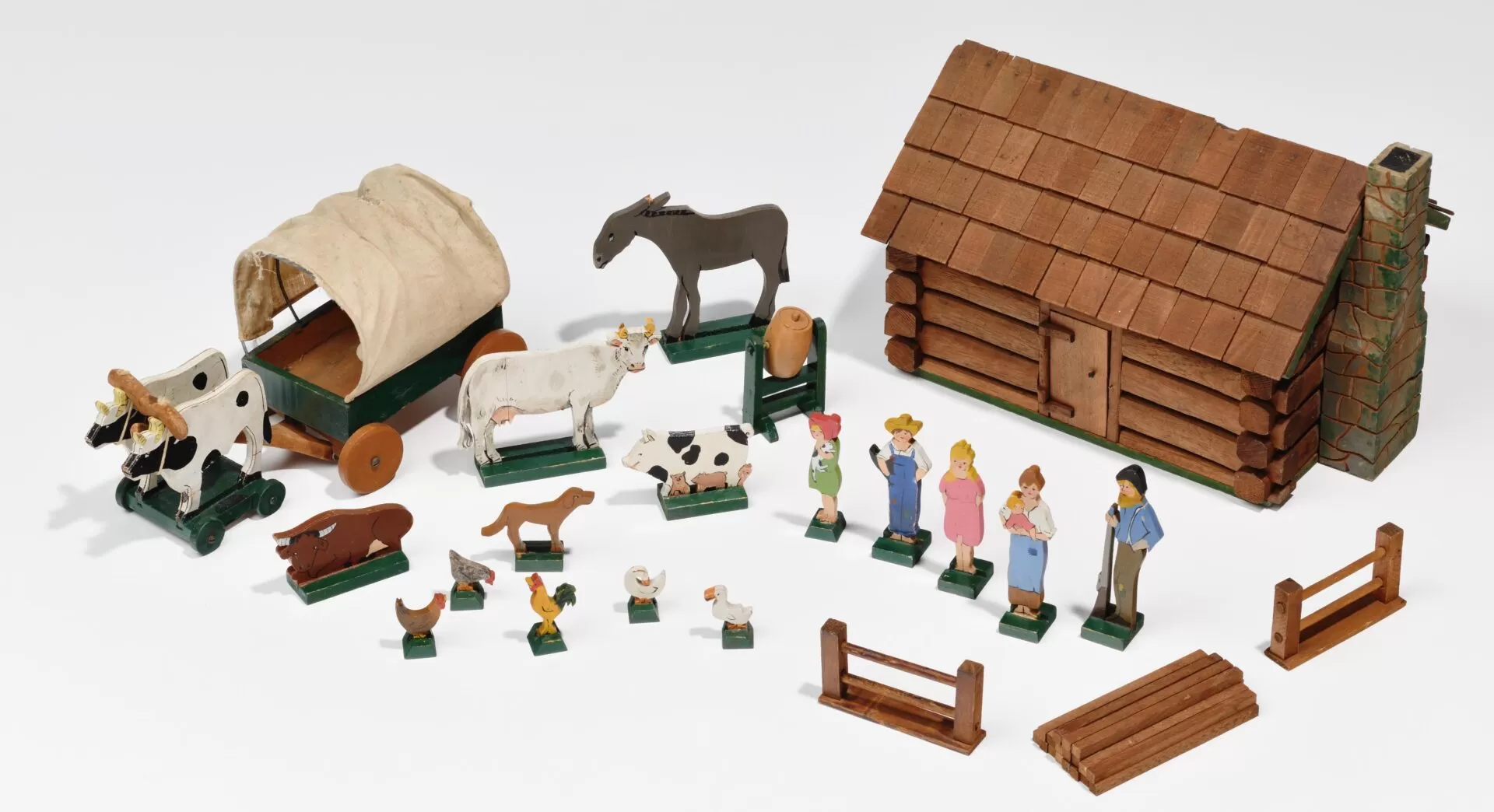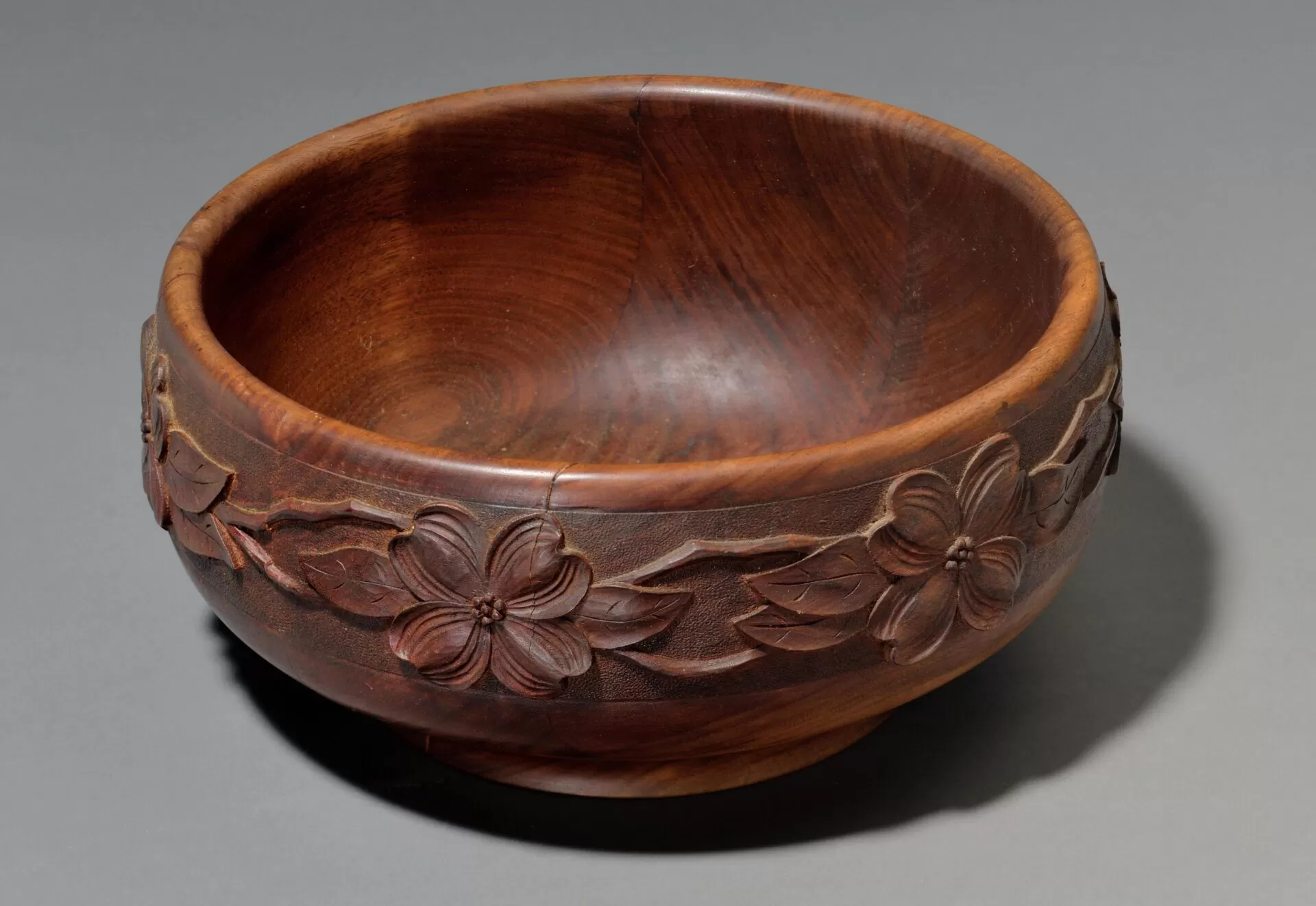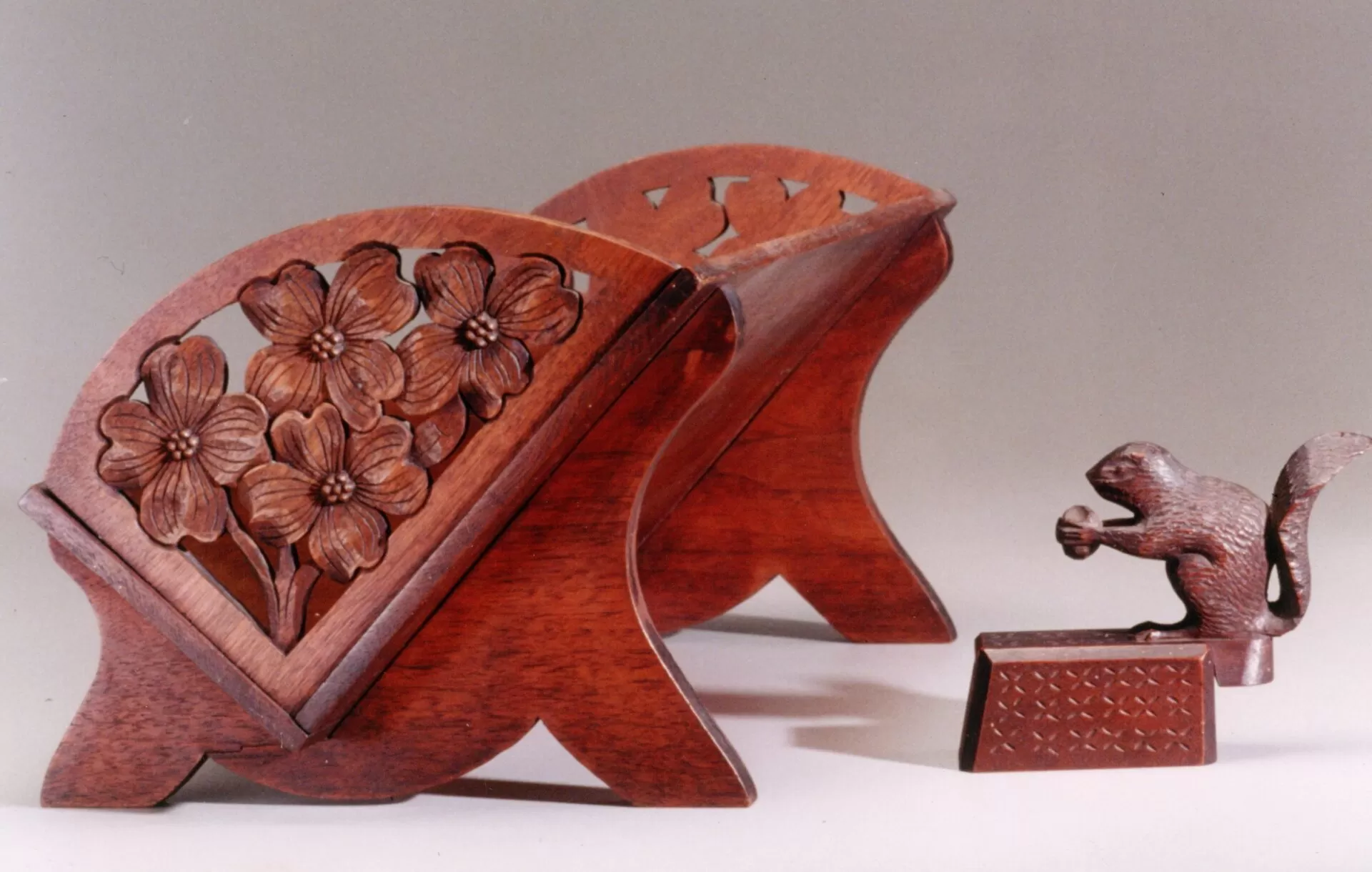New Book Now Available on Biltmore Industries
After nearly ten years of research, historian Bruce Johnson has completed his comprehensive study entitled “Biltmore Industries & Tryon Toy-Makers and Wood-Carvers: The Lives and Works of Eleanor P. Vance and Charlotte L. Yale.”
From 1901 until 1943, these two dedicated women taught hundreds of young men and women in Asheville and Tryon, NC, how to construct, carve, and decorate exquisite Arts and Crafts oak, walnut, and mahogany bowls, trays, bookends, frames, furniture, and children’s toys. All are now eagerly sought by collectors.
Eleanor Vance (1869-1954) had previously trained for ten years at the Cincinnati Art Academy, rising to become one of the country’s finest woodcarvers. At the age of 30, however, discouraged over her dim prospects as the first female professional woodcarver, she enrolled in Chicago’s Moody Bible College, as did Charlotte Yale (1870-1958), who had studied music for four years at Oberlin College in Ohio.
In 1901, the two young women settled in Biltmore Village, where they caught the attention of Edith and George Vanderbilt. With the Vanderbilts’ support, in 1905 they formed Biltmore Estate Industries. Under Vance’s instruction and Yale’s management, their hand-woven homespun cloth and hand-carved items were soon being sold to tourists and townspeople, as well as being shipped across the country.
But George Vanderbilt’s tragic death in 1914 set in motion a series of changes which resulted in the resignations of Vance and Yale in 1915 and the sale of Biltmore Estate Industries in 1917. It was purchased from Edith Vanderbilt by Fred L. Seely, president of the Grove Park Inn. That same year Seely shortened the name to Biltmore Industries and moved the workers from Biltmore Village to the grounds of the Grove Park Inn. As this new book chronicles, Seely transformed the small cottage business into the largest handweaving industry in the United States, one which survived the Great Depression and remained in operation until 1984.
In 1915, Eleanor Vance and Charlotte Yale moved to the small town of Tryon, forty-five miles south of Asheville. Already known as an artist’s colony, there they again began teaching young men and women to become woodworkers and woodcarvers. This time, however, they also introduced a line of colorful wooden children’s toys which their young workers cut and painted.

Mountain Farm toy set, made by Tryon Toy-Makers, ca. 1915-1920. (Photo Courtesy of North Carolina Museum of History)
Today the works of Biltmore Estate Industries, Biltmore Industries, and the Tryon Toy-Makers and Wood-Carvers are again being sought by museums, as well as collectors within and beyond the borders of North Carolina. The lives and influence of these two remarkable and humble women, however, had until now remained unappreciated, as during their lives they declined every opportunity to have their biographies written.

Wooden serving bowl, with hand carved dogwood boughs & flowers, made by Tryon Toy Makers, ca. 1925-1950. (Photo Courtesy of North Carolina Museum of History)
Historian Bruce Johnson, a past recipient of the Thomas Wolfe Memorial Literary Award, has traced the lives of Eleanor Vance and Charlotte Yale, while at the same time providing a reference guide for collectors, as it contains all of the firms’ shopmarks and detailed lists of their works.
Autographed copies of this limited edition, 200-page, hardback book ($39.00) featuring 239 photographs, can be ordered via the Facebook page “Biltmore Industries & Tryon Toy-Makers and Wood-Carvers.”



